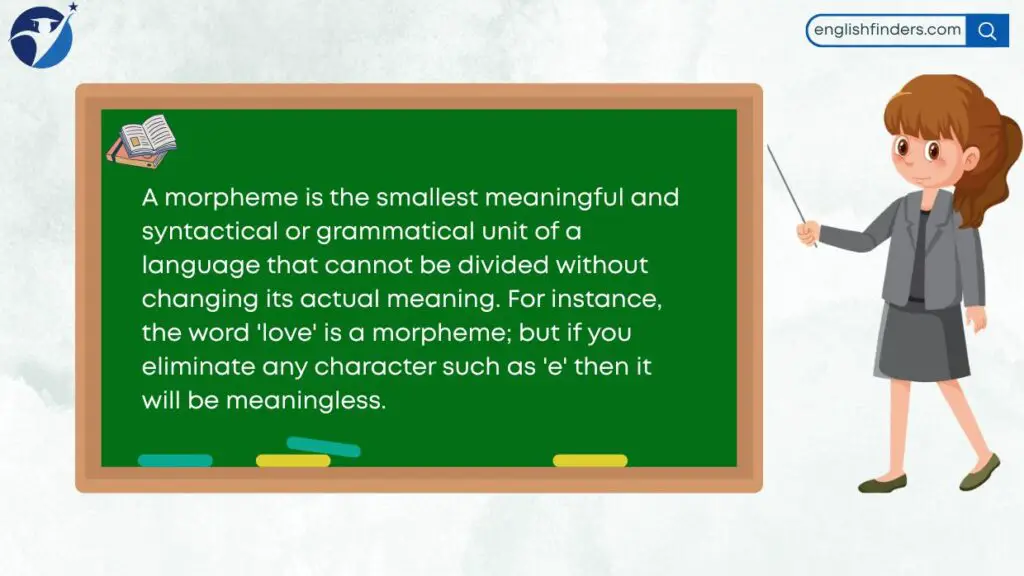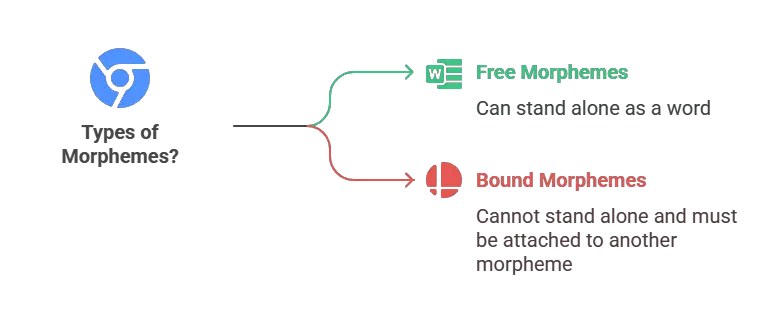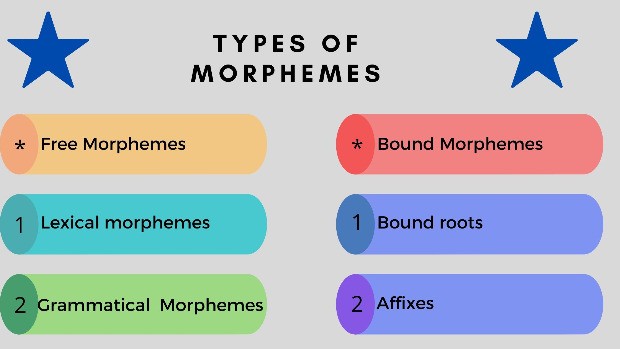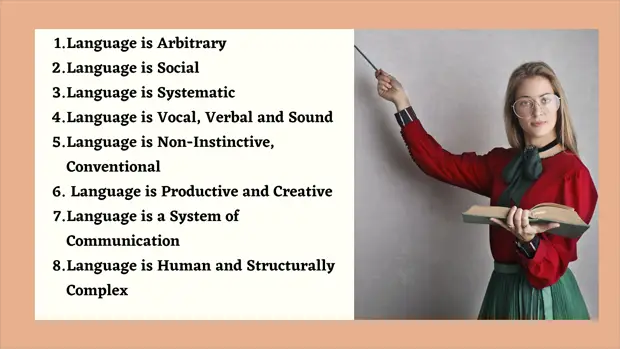Last updated on June 16th, 2025 at 09:47 pm
A morpheme is the smallest meaningful unit in a language. Think of it as the Lego block of language—each piece carries meaning, and when combined with others, it creates larger structures, like words. Unlike syllables, which are based on sound, morphemes are all about meaning. For example, in the word “unhappiness,” there are three morphemes: “un-“, “happy”, and “-ness”. Each contributes to the overall meaning of the word.
What’s fascinating is that morphemes can’t be broken down into smaller meaningful parts. If you try, the individual letters no longer carry meaning. In this lesson, we’ll explore the types of morphemes with clear explanations and helpful examples, so you can start spotting them easily.
What is a Morpheme?
Quick Navigation

A morpheme is the smallest meaningful and syntactical or grammatical unit of a language that cannot be divided without changing its actual meaning. For instance, the word ‘love’ is a morpheme, but if you eliminate any character, such as ‘e’, then it will be meaningless or lose the actual meaning of love.
Now, we can say a morpheme is the smallest grammatical unit of a language by which meaningful words are formed. However, this is how we may define ‘what a morpheme’ in linguistics.
Types of Morphemes
Now, let’s move on to the types of Morphemes in linguistics. The morphemes are of two main types. They are:
- Free Morphemes
- Bound Morphemes

1. Free Morphemes
A morpheme that has a particular meaning and can be formed independently is called a free morpheme. For example, free, get, human, song, love, happy, sad, may, much, but, or, some, above, when, etc.
All of the words have individual meanings and are free morphemes. Free morphemes can be categorized into two sub-types. They are:
- Lexical morphemes
- Grammatical and functional morphemes
Lexical Morphemes
The lexical morphemes are those morphemes that are large in number and independently meaningful. The lexical morphemes include nouns, adjectives, and verbs.
These free morphemes are called lexical morphemes—for example, dog, good, honest, boy, girl, woman, excellent, etc.
Grammatical or Functional Morphemes
The grammatical or functional morphemes are those morphemes that consist of functional words in a language, such as prepositions, conjunctions, determiners, and pronouns. For example, and, but, or, above, on, into, after, that, the, etc.
2. Bound Morphemes
A morpheme that doesn’t have any independent meaning and can be formed with the help of free morphemes is called a bound morpheme.
For example; less, ness, pre, un, en, ceive, ment. Bound morphemes can be categorized into two sub-classes. They are:
- Bound roots
- Affixes
Bound Roots
Bound roots are those Bound morphemes that have lexical meaning when they are included in other bound morphemes to form the content words. For example, -ceive, -tain, perceive, deceive, retain, contain, etc.
Affixes
Affixes are bound morphemes that naturally attach to different types of words and are used to change the meaning or function of those words.
For example, -ment in payment, enjoyment, entertainment en- in enlighten, enhance, enlarge, ‘s in Joseph’s, Lora’s -ing reading, sleeping, singing, etc.
Affixes can be categorized into five sub-classes according to their position in the word and function in a phrase or sentence. They are:
- Prefixes
- Infixes
- Suffixes
- Derivational
- Inflectional
Prefixes
Prefixes are bound morphemes included at the beginning of different types of words—for example, in-, un-, sub- incomplete, injustice, unable, uneducated, subway, etc.
Infixes
Infixes are those bound morphemes included within the words. There are no infixes that exist in the English language.
Suffixes
Suffixes are those bound morphemes included at the end of different types of words. For example; -able, -less, -ness, -en, available, careless, happiness, shortening, etc.
Derivational Affixes
Derivational morphemes make new words by changing their meaning or grammatical category. In other words, derivational morphemes form new words with a meaning and category distinct from the addition of affixes.
Thus, the derivational morphemes ‘-ness’ changes the adjective ‘kindness’, and the noun ‘care’ becomes the adjective careless.
This is how derivational morphemes make new words by changing their meaning or grammatical category. Derivational morphemes can be categorized into two sub-classes. They are:
- Class-maintaining derivational morphemes
- Class-changing derivational morphemes
1. Class-Maintaining Derivational Morphemes
Class-maintaining derivational morphemes are usually produced in a derived form of the same class as the root, and they don’t change the course of the parts of speech. For example; -ship -hood, relationship, leadership, livelihood, manhood, etc.
2. Class-Changing Derivational Morphemes
In contrast to Class-maintaining derivational morphemes, Class-changing derivational morphemes usually produce a derived form of the other class from the root—for example, -er, -ish, -al, teacher, boyish, national, etc.
Inflectional Affixes
Inflectional morphemes are not used to produce new words; instead, they indicate the aspects of the grammatical function of the word.
For instance, inflectional morphemes indicate whether a word is singular or plural, past tense or not, and comparative or possessive forms. English has eight Inflectional morphemes, all of which are suffixes.
English Inflectional morphemes affix:
Nouns:
- Plural (-s): The courses.
- Possessive: Jack‘s courses.
Verbs:
3rd person singular number non-past (-s):
- Jack teaches English well.
- He reaches the place on time.
Possessive (-ing):
- He is writing.
- She is singing.
Past participle (-en/ed):
- He has written the book.
- He worked
Adjectives:
- Comparative: (-er): John is happier than before.
- Superlative: (-est): He is the tallest person in the class.
Final Thoughts
Morphemes are vital parts of linguistics. That’s why we need to understand the two main types of morphemes: free morphemes and bound morphemes. A free morpheme can stand alone as a word while a bound morpheme can’t, rather a bound morpheme needs the assistance of a free morpheme to convey the meaning.
Frequently Asked Questions
What is a morpheme?
A morpheme is the smallest unit of meaning in a language. It can be a word on its own (like “cat”) or a part of a word (like “un-” in “unhappy”). Morphemes help us understand how words are formed and what they mean.
What are the two main types of morphemes?
The two main types are free morphemes and bound morphemes. Free morphemes can stand alone as complete words (e.g., “book,” “run”), while bound morphemes cannot stand alone and must attach to a free morpheme (e.g., “un-” in “undo” or “-ing” in “running”).
Can a morpheme be more than one syllable?
Yes, morphemes can be one syllable or more. For example, “unhappiness” has three morphemes: “un-” (one syllable), “happy” (two syllables), and “-ness” (one syllable). The key is that each morpheme carries meaning.
Morpheme Quiz
Have a look at these useful links:
- What is Psycholinguistics?
- Difference between Phonetics and Phonology
- Characteristics of language
- Definition of language by scholars
- Definition of Syntax in Linguistics

Azizul Hakim is the founder & CEO of englishfinders.com. He is a passionate writer, English instructor, and content creator. He has completed his graduation and post-graduation in English language and literature.





Thanks a lot
Welcome!
Thank you so much for providing glaring notes of morphemes in very easy way
Welcome!
thanks alot
Welcome!
thank you so much for such clear notes
Welcome!
Thankyouu so very much for your help. 🙂
It’s my pleasure dear.
Thanks for providing such a glorious information of Morphemes. Thanks a lot.
You’re welcome!
Thank you so much.
all about informative
Love the way morphemes are explained. Its easy to understand.
Thank you!
God bless you.
What a sophisticated way of elaboration 💜
Thank you!